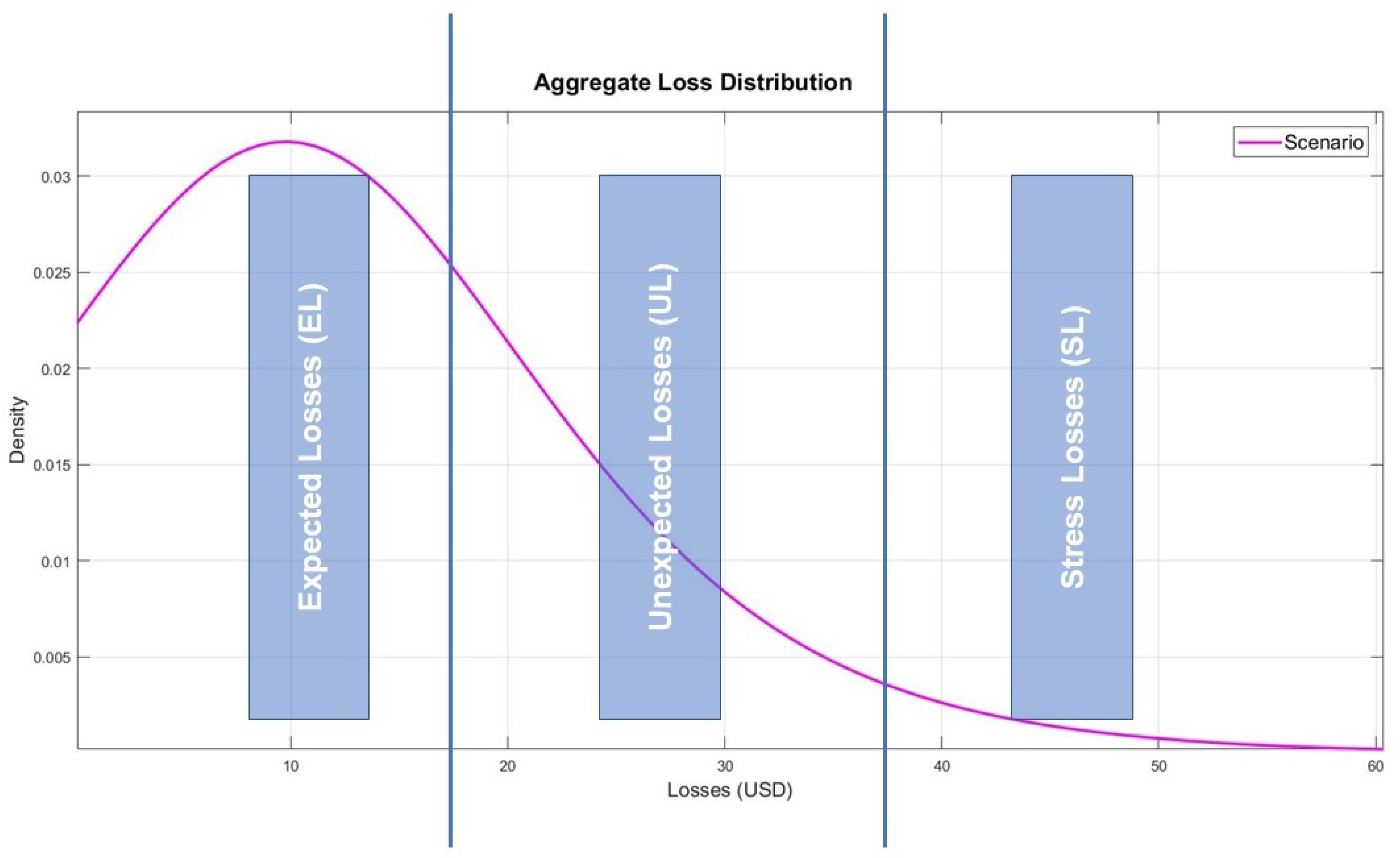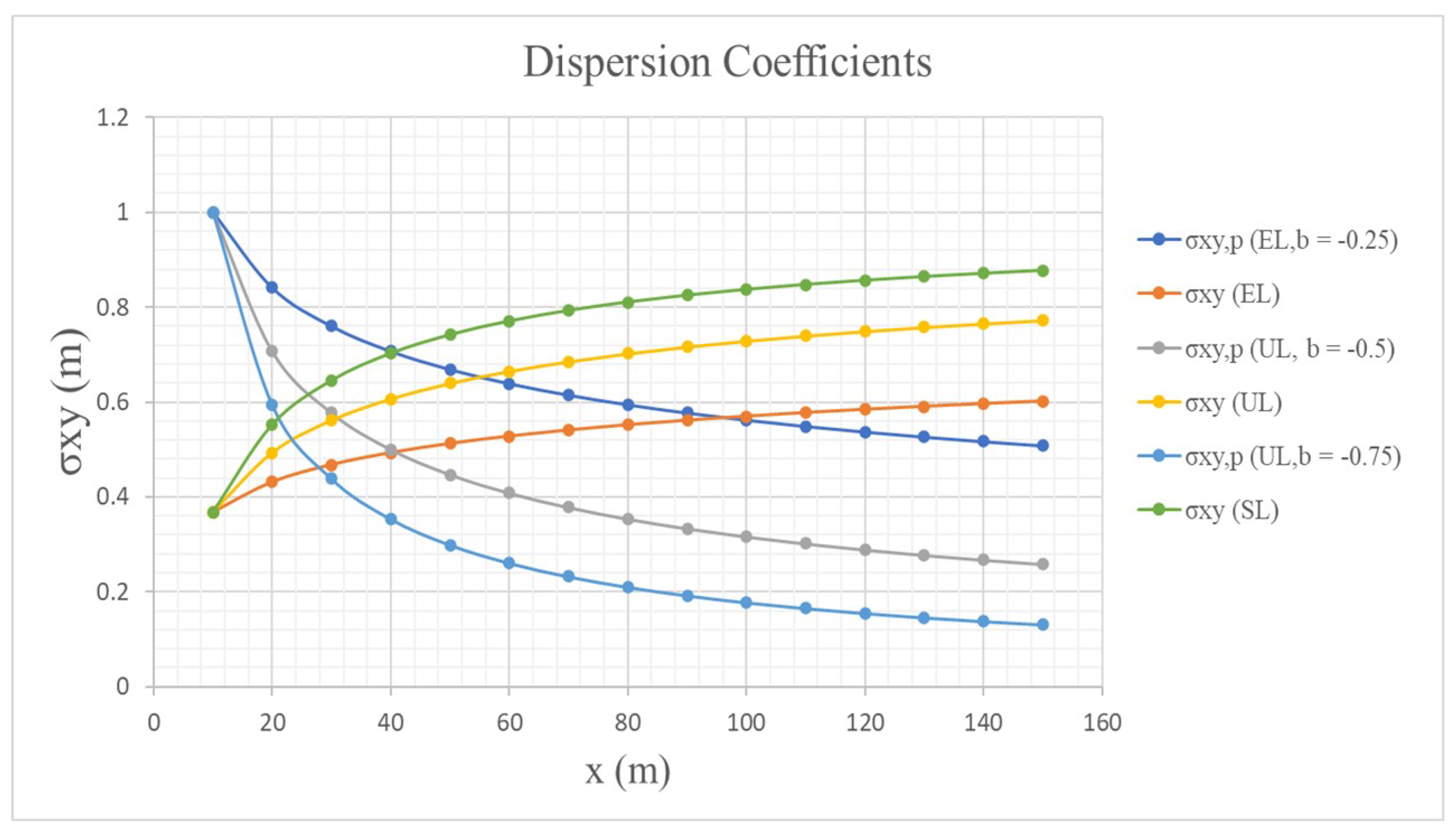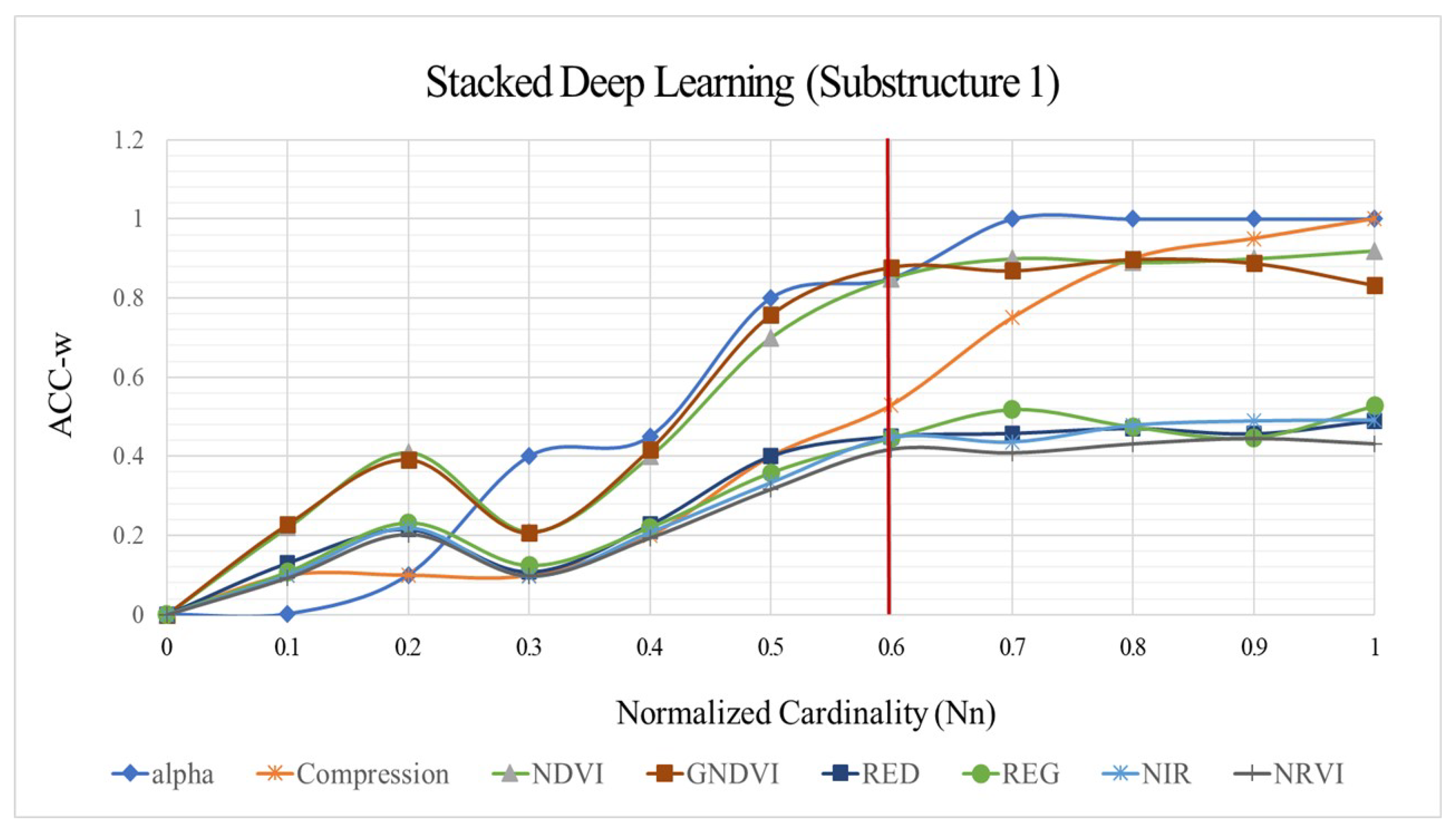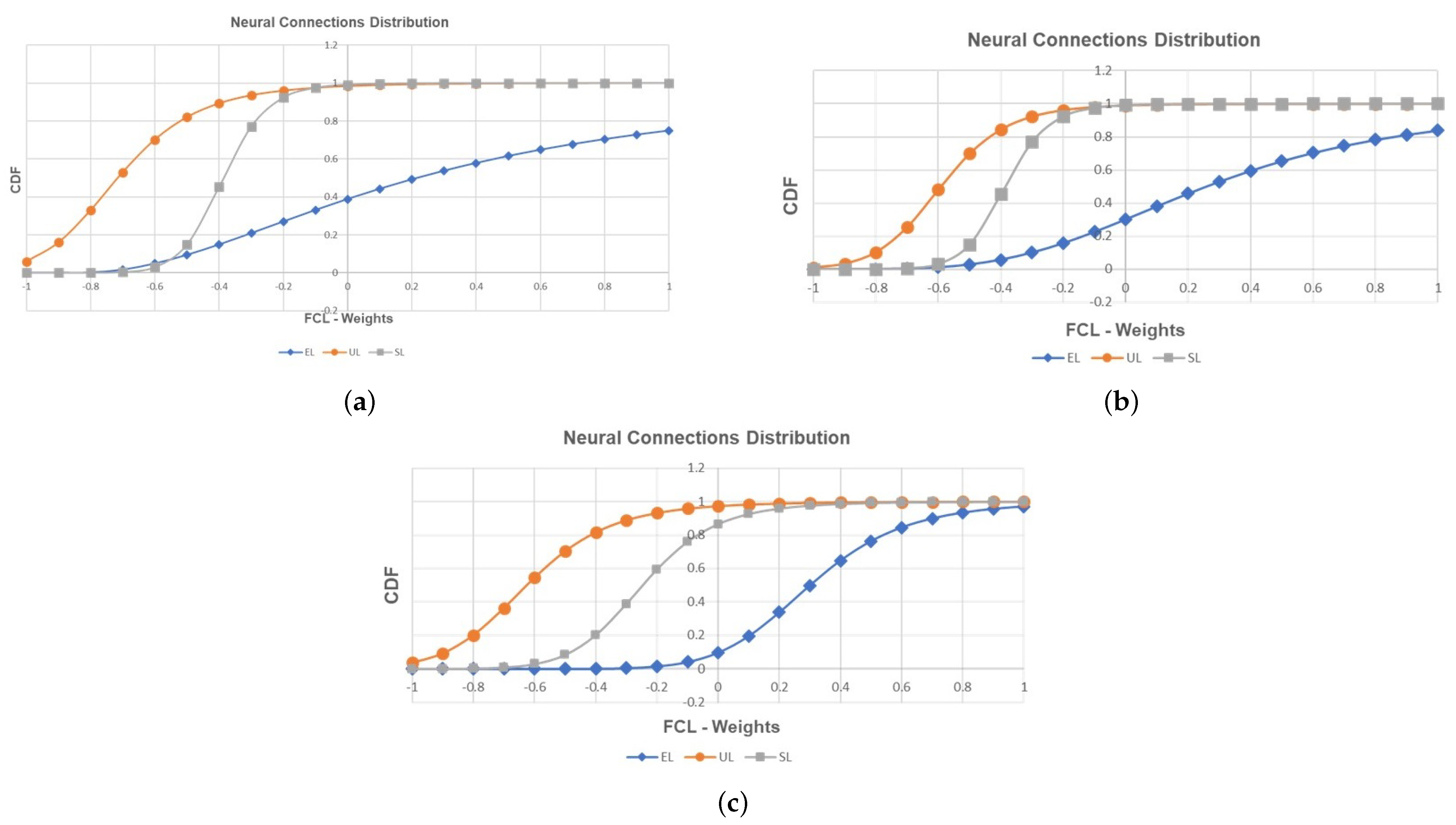1. Introduction
The adoption of Sustainable Development Agenda 2030 (SDA) by the United Nations in September 2015 led this organisation to raise several concerns about the effects of climate change on the planet. One sector that has generated significant attention for its greenhouse gas emissions (GHG) to the atmosphere has been the agricultural sector. For this reason, several governmental and non-governmental entities such as FAO (UN Food and Agricultural Organization) have begun to promote a series of initiatives to achieve a balance between agricultural development and sustainability in the context of the planet’s food security [
1]. In recent years, oil palm has had a more significant development worldwide [
2], thanks to its nutritional qualities that make it a strong presence in food production (as an enriched source of palmitic acid) [
3]. Estimations show that one hectare of planted oil-palm crops produces six to eight times more oil than other types of oilseed, which is only outperformed by soybean oil [
4]. However, its cultivation has raised several concerns, as its development has taken place in areas of high ecological conservation in different locations worldwide. This concern has also extended to other types of crops [
1,
5]. In oil-palm cultivation, lethal wilt (LW) is a phytosanitary event that significantly affects the crop, generating the necrosis of the palm leaves left and drying the palm. LW is caused in oil-palm crops by an unbalance of three elements: weather, oil palms, and a pathogen (
Haplaxius crudus). The latter is a vector that spreads the disease to healthy palms. When a palm is diagnosed with LW, insecticides are necessary to eradicate the affected unit and fencing it (1 Ha. approx.–144 oil palm units) to prevent the progression of the disease, generating the emission of large quantities of GHGs into the atmosphere. Re-seeding in the non-productive stages of oil palm has led to significant economic losses due to the use of fertilisers for soil treatment [
4,
6,
7]. One way to balance development and sustainability in oil-palm cultivation focuses on identifying and characterising phytosanitary events early, suggesting a technological challenge.
Operational risk (OR) is one of the critical concepts to achieve organizations’ environmental and financial sustainability. According to the Basel II agreement, operational risk (OR) is defined as
“…the possibility of incurring in losses due to deficiencies, failures or inadequacies in human resources, processes, technologies, infrastructure or by the occurrence of external events…” [
8]. OR has emerged as a key concept for characterising risks arising from phytosanitary and climatic events in agricultural crops and is described by aggregate loss distribution (ALD). ALD groups phytosanitary risk events, such as the suggested LW, into three-loss categories (parametric risks): expected losses (EL-C1 Risk Category), derived from the identification of healthy palms; unexpected losses (UL-C2 Risk Category), derived from the identification of apparently healthy palms; and stress losses (SL-C3 Risk Category), derived from the misidentification of oil palms units with LW in advanced stages. These risk categories make it possible to establish a differentiated treatment of crop units according to LW-affectation (risk parameters), leading to a natural reduction in insecticides and fertilizers. In general, ALD is characterised by slender distributions (log-normal, log-logistic, Weibull, Pareto) [
9], where the difference between the EL and SL values represents the sustainability GAP (
). Expanded
indicate improved sustainability due to better crop management. The concepts mentioned above were included by the RSPO Standards (Round-table for Sustainable Palm Oil), which aim to improve the environmental sustainability of oil-palm cultivation worldwide [
4,
10].
This paper proposes a Lagrangian deep-learning model (LG-HDLM) for the spatio-temporal characterisation of early-stage phytosanitary events suggested by LW in oil-palm crops. The LG-HDLM model integrates two sub-structures, a first substructure (Substructure 1) defined by a stacked deep-learning model (SDLM) for identifying and labelling of morphologically complete oil-palm units (MCOPs). The MCOPs were obtained from a segmentation process (cropped images-CIs) carried out on each reflectance band that defines a multi-spectral aerial image (MAI) (green, red, red edge, near infrared) and on three vegetation indices commonly used to assess plant vigour in crops: NDVI (normalized difference vegetation index), GNDVI (green NDVI), and NRVI (normalized red vegetation index) [
11]. The MAIs were captured over a study zone using a UAV (unmanned aerial vehicle). A second substructure (Substructure 2) integrates a Convolutional deep-learning model (CDLM) for the spatial characterisation of phytosanitary events (PEs) based on the risk categories that define the ALD. For the report of PEs at an early stage, this layer integrates an inverse Lagrangian Gaussian dispersion model (I-LGPTM) [
12] to describe the evolution of LW in the field, creating the structure of a forecast map (dynamic vegetation index).
For the classification of oil-palm crops by risk categories, the LG-HDLM (Substructure 2) integrates a novel Softmax function defined by a generalised Log-logistic activation function. For its analysis and evaluation, two risk scenarios were defined. A first risk scenario (Reference Scenario—Scenario 1) shows the structure of losses for a natural evolution of LW in the field for a period of 6-months. For Scenario 1, the MCOPs were randomly selected and classified by LW-affectation (Scenario 1: EL:744, UL:106, SL:150, month 6). According to the Basel II agreements, this scenario was set up at a reliability of (1000 crop units). A second risk scenario shows a projected starting point of disease onset, composed of ten (10) random points of disease dispersion (Scenario 2: EL:840, UL:150, SL:10, month 0—focus of disease). The latter shows the LW evolution in the field for stages before Scenario 1, using an inverse Lagrangian Gaussian puff-tracking model (I-LGPTM) integrated into the convolutional layer that defines Substructure 2. A third risk scenario shows the evaluation metrics based on a spatial LW-affectation (Scenario 3: ELM:855,ULM:144, SLM:1, Metric Scenario), where 855 (ELM) represents the number of oil palms correctly identified by a model in the three risk categories aforementioned (EL–UL–SL), 144 (ULM) crop units in which a model fails to decide, and 1 (SLM) crop unit in which the model fails to detect LW in advanced stages. For this scenario, the sustainability of reference is set at a value of :854 (e.g., ).
For the analysis and validation of LG-HLDM in a first stage, LG-HDLM was evaluated against the identification and labelling of MCOPs (Substructure 1) using the CIs per MAI and per VI obtained from the segmentation process aforementioned. This evaluation identifies the reflectance band (Spectral image) or vegetation index (VI) that allows better identification of MCOPs by LW-affectation. In the first phase within a second stage, the LG-HDLM was evaluated against the reconstruction of the loss structure defined by Scenario 1 and was validated against two generalised deep-learning models commonly used for pattern classification and labelling: a deep-learning model with Stochastic stacked structure (SSDL) [
13], and a deep-learning model with convolutional structure (CDLM) [
14]. In a second phase within the same stage, the LG-HDLM (Substructure 2) was evaluated against three temporal risk scenarios showing the evolution of LW in a study zone for a period of 6 months before reference Scenario (Scenario 2—month 0, Scenario 2.1—month 1, Scenario 2.2—month 2).
In general, LG-HDLM reached performance rates close to
on average against the characterisation of MCOPs by LW-affectation for Scenario 1 (ELM:858. ULM:113,SLM:29). This performance was above the performance rates achieved by the SSDL model with
(ELM:744,UL:106,EL:150) on average and above the performance rates achieved by the CDLM model with
model (ELM:794,ULM:74,SLM:133) on average for the same scenario. A previous labelling of MCOPs promoted this good performance carried out by Substructure 1 (Stage 1). In this first stage, Substructure 1 achieved values above
for an
-
w index (Accuracy weighted index) against the classification of MCOPs by risk category using the CIs obtained from NDVI and GNDVI Indices, which corroborated the importance of these indices for assessing the plant vigour in the field. In a second stage (Substructure 2), the proposed model achieved performance rates close to
against the risk characterisation for each temporal scenario defined for this study. This suitable performance resulted in the evolution of ALDs toward lighter losses, widening the sustainability GAP (
) based on Scenario 3 [
15]. By its conception, the LG-HDLM model set up a reference model for modelling parametric risks. Due to its capacity for adaption and learning, the LG-HDLM can be extended to characterise different phytosanitary events in oil-palm crops and in other crops, a critical element in achieving the balance between development and sustainability in the framework of the SDA-2030.
This paper is structured as follows.
Section 1 presents the main development trends identified in the scientific literature.
Section 2 presents the methodology for the analysis and validation of the proposed model will be detailed, while
Section 3 presents the results’ analysis and discussion according to the parameters and metrics that define the OR.
Section 4 concludes and indicates further studies to balance sustainability and development in the SDA-2030 context, integrating financial-risk and computational-intelligence techniques.
4. Results
Table 3 and
Table 4 show the performance achieved by LG-HLDM (Substructure 1) against the identification and labelling of MCOPs for three near-infrared reflectance bands (red, red edge, near infrared) and three VIs (NDVI,GNDVI,NRVI) commonly used to assess plant vigour in agricultural crops. The results show that Substructure 1 performed values above
on average for
-
w index in the phases of training, validation and generalisation in the identification and labelling of CIs obtained from NDVI and GNDVI indices. These values were above the values performed by the proposed model for CIs obtained from the NIR band for these same stages (
). Regarding the learning processes, Substructure 1 also reached greater stability against the NDVI index, as evidenced by the mse (
) and
(
) indices, which are located close to zero (
) for the generalisation phase. These values were much lower than those given by Substructure 1 against the identification and labelling of CIs using the GNDVI index, demonstrating that the NDVI can also be used to characterise MCOPs (NDVI-MCOPs) affected by a PE such as that caused by LW.
Figure 7 shows the different crop images (CIs) identified and labelled in MCOPs and non-MCOPs categories based on the NDVI index. Concerning the characterisation of MCOPs using MAIs, the results show that LG-HDLM (Substructure 1) achieved performance values that were above those reported by [
65] for the detection of
Ganoderma in oil-palm crops (
:) using VIs. Performance values were similar to those by [
27] for the detection of MCOPs from multi-spectral images (
), as well as to the results reported by [
66] for the detection of MCOPs using high-resolution satellite images (
). It is essential to highlight that Substructure 2 includes many of the recommendations made by these authors regarding the detection of PEs in crops through the use of MAIs.
Figure 8 shows the behaviour of Substructure 1 against the identification and labelling of CIs using three MAIS (NIR, REG,RED) and three VIs (NDVI, GNDVI, NRVI). Here, it can be seen how the cardinality was increased when the compression ratios were much higher (first layer).
Figure 8 also shows that the Substructure 1 managed to stabilise learning (
ACC-
w = 0.9933 (
NDVI)) when the cardinality reached
(six Stacked Layers) for a compression index that was close to
(lower computational cost). It is essential to mention that the learning factor (
) increased as the model became less flexible due to a higher compression of CIs. Overall, Substructure 1 evidenced superior performance levels against the identification and labelling of CIs using the NDVI and GNDVI indices. However, Substructure 1 was able to stabilise learning much more quickly for the NDVI index, as evidenced in
Figure 8.
Table 5 shows the results performed by LG-HDLM (Substructure 2) against the risk characterisation defined by the reference scenario (Scenario 1). Performance rates achieved by Substructure 2 show values close to
on average (
:858) against the classification of NDVI-MCOPs by risk category (LW-affectation), which were above the performance rates achieved by the CDLM
(
:801) and the SSDLM
(
:792), on average, against this same classification. The ALDs showed lean structures with lighter losses due to better risk characterisation (e.g., log-logistic, generalised Pareto, generalised extreme value), and where the projected SL losses given by LG-HDLM were much lower (
) than SL projected losses achieved by CDLM (CDLM (
) and SSDLM (
) (
Figure 9). In this process, the lean distributions were promoted by the goodness of fit against the log-logistic distribution of reference (negative log-likelihood
), a value much lower than those obtained by the other models when fitting the losses to the log-logistic distribution function representing the activation function for Substructure 2. The above shows the ability of LG-HDLM to identify extended
S-
that guarantee environmental and financial sustainability for crops affected by PEs, such as the one suggested by LW for oil-palm crops, ensuring its structural stability against the ALD used for modelling the operational risk.
Table 5 also shows that the models selected by the validation of LG-HDLM were correct, since they had similar behaviours in terms of dimensional stability and structural stability against the ALD of reference, as shown by the
indices, which were above
on average, and similar values for VC (
), SK (
), and KC (
) indices of the reference scenario (Scenario 1). It is essential to mention that, although LG-HDLM did not show performance values significantly different from those achieved by the validation models, this analysis allowed the demonstration of the fact that the dynamics integrated by LG-HDLM do not distort its ability to characterise the loss structure based on lean ALDs. Regarding stability,
Table 5 shows that LG-HDLM reached a similar behaviour concerning the characterisation of losses to the work reported by [
20] on the estimation of credibility in the integration of databases for the estimation of operational risk, or with the outcome of [
67,
68], who offered a broad characterisation of the probability distributions used for the modelling of operational risk (e.g., log-logistic, Weibull, Generalized Pareto).
Table 6 shows the behaviour exhibited by LG-HDLM against risk characterisation for three temporal risk scenarios describing the evolution of LW in the field for a period of 6 months (Month 0, Month 2, Month 4) before to reference scenario (Scenario 1).
Table 6 shows that LG-HDLM performed rates close to
on average (Scenario 2-
:792) against the classification of NDVI-MCOPs by risk category, despite the limitation imposed by the temporal observability of phytosanitary events in stages before to Scenario 1. The probability distributions provided by LG-HDLM for each risk scenario showed slender distributions with light losses and
that led to a better fit, as the temporal observability concerning the reference scenario was much lower. The latter guarantees the structural stability of LG-HDLM when faced with the characterisation of a risk scenario. It is essential to mention the evolution experienced by ALD distributions, due to the effect of the theoretical development of LW in the field, can be evidenced through dimensional stability characterised by much lower variances and increasingly higher values of skewness (SK) and kurtosis (KC). The suitable performance achieved in general by LG-HDLM was promoted by the novel convolutional mechanism defined by Substructure 2, which integrates an inverse Lagrangian Gaussian dispersion model (
I-
) to describe the spatio-temporal evolution of a PE analytically in the field, giving rise to the concept of dynamic vegetation index (forecasting maps). Concerning the characterisation of losses for each of the risk scenarios, LG-HDLM (Substructure 2) yielded probability distributions that evolved towards lower losses, maintaining at all times the loss structure that defines operational risk, which is in line with the work developed by [
9,
69] on the modelling and evolution of operational risk.
Table 7 shows the results performed by the fully connected layer (IC fingerprint—Substructure 2) against the classification of NDVI-MCOPs by LW-affectation for each temporal risk scenario. Here, it can be observed that the IC fingerprint indices achieved agreement values close to
(
) on average, with variations that were around
(
) against the NDVI-MCOP convolutional patterns selected from Scenario 1. Once again, the aforementioned shows the ability of LG-HDLM to characterise risk for a temporal scenario (6 months) before the reference scenario (Scenario 1) that shows the natural evolution of a PE in the field. In the context of Lagrangian dispersion models,
Table 7 shows that NDVI-MCOP Gaussian functions with wider bases yielded higher values for dispersion parameters (
,
), indicating the presence of NDVI-MCOPs in healthy (EL) and apparently healthy (UL) categories; while the Gaussian functions that presented more slender structures showed, on average, the lowest dispersion parameters, which indicates the presence of NDVI-MCOP Gaussian functions affected by LW. The inverse Lagrangian dynamics integrate the convolutional layer, transforming the LG-HDLM into a semi-physical model by adaption, making it ideal for characterising PEs at an early stage, as suggested by LW in the field.
According to Gaussian functions represented by the LW-affectation for MCOPs in the study zone, the spatial structure of the convolutional layer for NDVI index (Substructure 2) can be observed in
Figure 10. The figure corroborates that the Gaussian functions with more extended bases indicate the presence of MCOPs in the categories of healthy units (EL) and apparently healthy units (UL), while the Gaussian functions with slender structures indicate the presence of MCOPs affected by LW, which is in-line with the principles of the Lagrangian model presented in
Section 3.2. The spatio-temporal evolution of the convolutional layer due to the effect of the semiphysical dispersion dynamics established by the proposed Lagrangian model makes the structure of this layer a forecasting map (dynamic vegetation index) for the characterisation of phytosanitary events at an early stage.
To assess the performance of FCL (fully connected layer) against the risk characterisation,
Figure 11 shows the CDFs (cumulative distribution function) for the normalised weights representing the
IC fingerprint–FCL relationship by risk category. According to the probability distribution defined by the
softmax function (log-logistic distribution Equation (
1)), the behaviour of LG-HDLM (Substructure 2) was evaluated based on three parameters: structural factor (
), stability factor (
a), and dimensional factor (
) (Equation (
17)). Regarding the
dimensional factor,
Table 8 shows that this factor remained close to unity against the NDVI-MCOPs classification in each of the risk categories defined by a temporal scenario, indicating that the model maintains its stability despite the temporal evolution of a phytosanitary event in the field. Regarding the CDFs for the EL risk category, these showed more extended CDFs, as a result of the increase in the
structural factor (
) due to the effect of the better classification of NDVI-MCOPs. This effect was the opposite for the SL category, which groups the misclassifications of NDVI-MCOPs affected by LW. The
dimensional factor (
), on the other hand, reached negative values, which shows the tendency of FCL to yield slender distributions in line with the loss structure for ALD. The above clearly shows the ability of LG-HDLM to characterise phytosanitary events in the early stages and to characterise risk parameters (
-
-
) to improve the environmental and financial sustainability (extended
S-
) of oil-palm crops affected by a PE, as suggested on the LW.
5. Conclusions and Further Studies
LG-HDLM allowed the spatio-temporal characterisation of risks in oil-palm crops affected by a PE, such as LW. The model integrated two deep-learning models into a single structure for this process. A first deep-learning model (Substructure 1: stacked deep-learning structure) for automatic classification of MCOPs from a series of MAIs obtained in the field, and a second deep-learning model (Substructure 2: dynamic convolutional structure) to identify the LW-affectation in MCOPs. To describe the spatio-temporal behaviour of LW in the field, LG-HDLM integrated into Substructure 2 an inverse Lagrangian Gaussian dispersion model. Due to the semiphysical structure by adaptation to phytosanitary risk modelling, LG-HDLM was validated using a novel methodology that integrates financial and environmental metrics according to Basel II agreements and RSPO criteria. The results show the ability of LG-HDLM to identify the evolution of LW for different temporal risk scenarios.
The stability achieved by LG-HDLM against the characterisation of losses generated by LW could be evidenced by the evolution of the ALD structure. In general, LG-HDLM yielded ALDs characteristic of probability distributions with lean structures (structural stability) according to Basel II agreements in operational risk modelling (e.g., log-logistic, log-normal, generalized extreme value), despite the evolution of the ALDs towards lighter loss structures (dimensional stability) as a result of better identification of LW evolution in the field. This stability shows the ability of LG-HDLM to reconstruct a particular structure of losses for different temporary risk scenarios that evolve according to a dispersion Gaussian pattern for LW.
The results yielded by LG-HDLM showed performance rates above on average against loss characterisation for different temporal risk scenarios. This good performance was promoted by similar ALDs structures as shown by the IOA index against losses, which reach values close to with S-GAPs evolving into more extended S-GAPS, despite the temporal observability of identifying early-stage lethal wilt. The stability of these S-GAPs shows the ability of the model to theoretically improve the environmental and financial sustainability of oil-palm crops affected by LW as a result of improved risk management, and to contribute to achieving a balance between development and sustainability in oil-palm crops in the context of the SDA-2030.
Thanks to its adaptive ability and stability in learning against the characterisation of losses for an ALD of reference (Scenario 1), LG-HDLM could be extended to characterise the risk derived from PAEs for other types of crops. In this way, methodologies to identify the dynamic evolution for a particular PAE should be incorporated, converting the convolutional layer (Substructure 2) into a semi-physical dynamic vegetation index (DVI). These DVIs will have the objective of efficient crop management from the phytosanitary point of view, establishing strategies for localised monitoring of PAEs in the field through UAVs. This will lead the model to become a tool for the automatic characterisation of risk parameters in the field as an input for the configuration of index insurances aimed at the differentiated protection of crop units affected by an PAE. It is essential to highlight that index insurances aim to extend S-, establishing the proposed model as a natural alternative to achieve a balance between development and sustainability for different crops from risk modelling.
It is essential to highlight that the palm sector in the world will require the certification of around 7,000,000 ha of cultivation and around 31,000,000 tonnes of crude oil under RSPO standards by 2025. This makes it necessary to create technologies that aim to effectively characterise the risks derived from PAEs for this type of crop. It is important to mention that the development of technologies to achieve RSPO certification should include aspects related to: the optimisation and efficiency of productivity; the protection, conservation and improvement of the environment; and sustainable livelihoods, poverty reduction and social inclusion, in line with the planet’s sustainable development goals (SDGs). In this sense, LG-HDLM aims to improve production efficiency by integrating financial criteria to protect, conserve and improve the environment.
For effective risk management in crops, the authors propose the creation of an augmented intelligence platform for the real-time monitoring of PAEs. This platform will integrate into a single structure a series of DVIs using hyperspectral technologies to expand the reflectance spectrum in the characterisation of crop units affected by a particular PAE; and IOT-IOB networks (Internet of Things and Beings) using different communication technologies (e.g., LORA, Zigbee) with the objective of monitoring in the field the balance between climate, host (unit) and vectors. Accordingly, this platform will result in a series of forecasting maps to identify emerging risks, enabling the management of risk of PEs at an early stage. The above will bring about a natural reduction in insecticides and fertilisers and, consequently, a reduction in the emission of GHGs from agricultural activities.


















